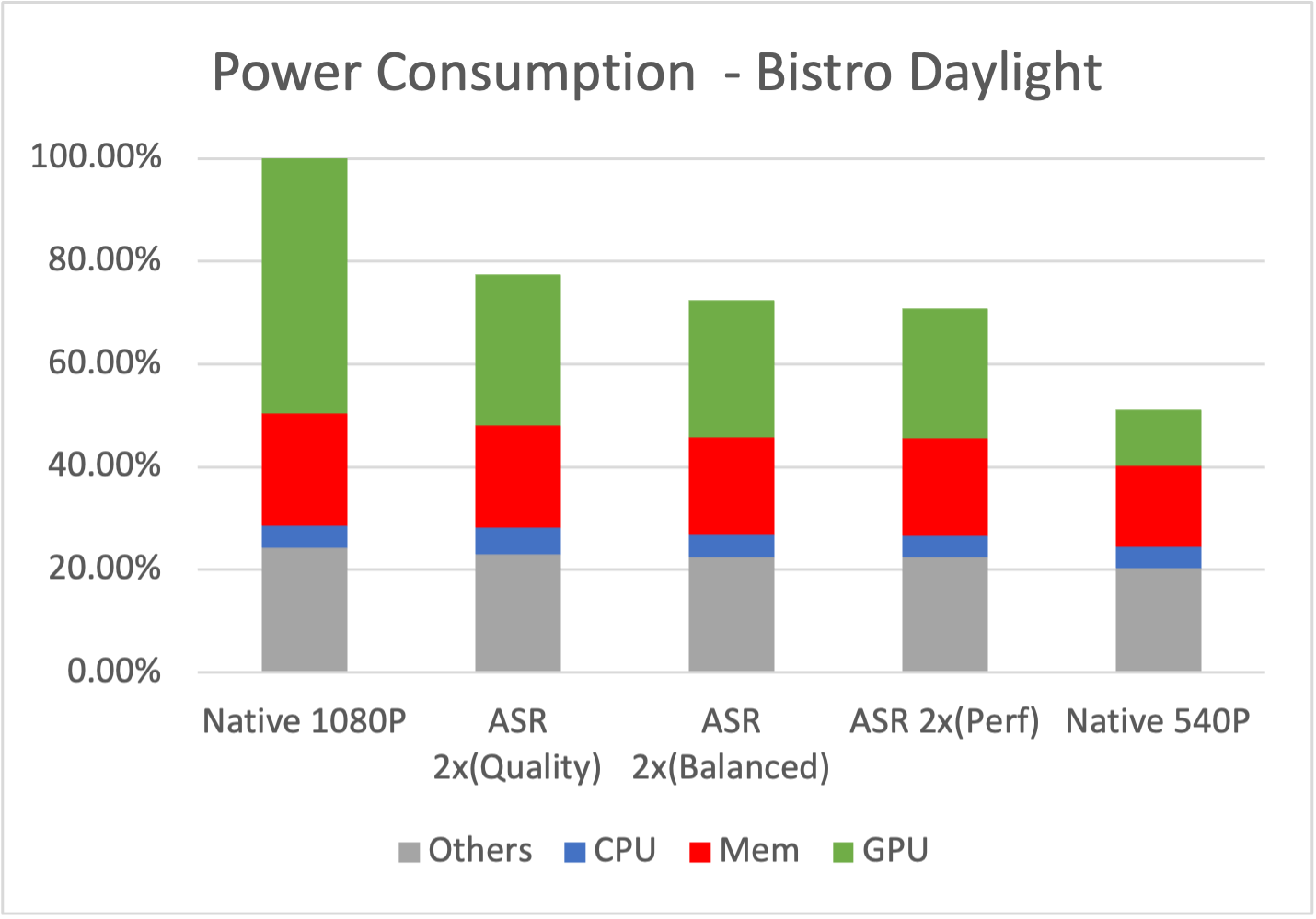Arm's new ASR game-upscaling tech is based on AMD's FSR2 — this open-source solution is optimized for lower-power devices
Arm wants to make high-quality, high-performance gaming on mobile devices possible with Arm ASR.

Arm just introduced its own upscaling technology, based on AMD’s FSR2, called Arm Accuracy Super Resolution (Arm ASR). Unlike the AMD upscaler, which is primarily built for PCs and high-end consoles, Arm’s implementation of the temporal upscaler is focused on mobile applications, allowing more lightweight devices to run the technology despite requiring more processing horsepower. The company also made it available to game developers via an open-source license, letting them implement it without additional licensing costs.
Arm chips are traditionally found in smartphones and tablets. These devices have typically used smaller screens and lower resolutions, thus making upscaling unnecessary for them. But recent advancements — notably Apple’s M-series chips — are now pushing the boundary for Arm processors on laptops and desktops. Apple has even added Game Mode to macOS Sonoma to encourage more people to game on MacBooks. We also now see AAA titles, previously the domain of gaming PCs and full-on consoles, launch for mobile phones.
Since the Arm ASR is specifically built for mobile devices, it can perform better than the AMD FSR2. According to Arm’s internal testing with the Immortalis-G720 GPU and a resolution of 2,800 x 1,260 pixels, Arm ASR delivers 53% more frames at 2x upscaling, compared to FSR2’s 36%. Arm also tested the tech with MediaTek’s Dimensity 9300 chip, with ASR 2x showing a drop in power consumption of more than 20%, compared to rendering the scene at the native 1080p.
This development is crucial for mobile devices that primarily run off batteries, as it will reduce power consumption and allow users to play games for longer. It will also reduce thermal throttling and prevent smartphones and tablets from becoming uncomfortably hot during long gaming sessions.
This is not the first upscaling technology designed for mobile phones, as Qualcomm has previously launched its own Snapdragon Game Super Resolution in 2023. However, Qualcomm’s solution uses spatial upscaling, which focuses on performance rather than quality. On the other hand, Arm ASR uses temporal upscaling, which integrates with the game engine to deliver higher quality at the cost of higher performance requirements.
Arm ASR could also be useful for Microsoft’s Copilot+ PCs, especially as the company is pushing gaming on Windows 11 on Arm. Microsoft launched its own spatial upscaling solution last May, with Automatic Super Resolution (Auto SR). Although this doesn’t provide the same quality as Arm’s solution, it taps into AI technology and on-device NPUs to gain an edge. Since this requirement uses AI processing, Microsoft currently limits it to Copilot+ PCs.
One more advantage the Arm ASR brings is that it should be familiar to many developers. As it is based on AMD’s FSR2, programmers who’ve previously worked with it should find Arm ASR’s API and configuration options familiar and easy to use. Since it’s also open source, they don’t have to worry about licensing fees just to add it to their projects. These would make implementing the tech for cross-platform games much easier, allowing users to enjoy their favorite titles and continue their progress from their desktop PCs to their iPhones.
Get Tom's Hardware's best news and in-depth reviews, straight to your inbox.

Jowi Morales is a tech enthusiast with years of experience working in the industry. He’s been writing with several tech publications since 2021, where he’s been interested in tech hardware and consumer electronics.
-
Notton FSR2? That's the worst oneReply
It's blurry to begin with and leaves a ghost trail anytime there is motion on screen -
-Fran- Reply
Blurry? Have you had your eyes checked or you're just talking out from the behind of your own self?Notton said:FSR2? That's the worst one
It's blurry to begin with and leaves a ghost trail anytime there is motion on screen
If there is one thing you can't say about FSR2 is that it's blurry where everyone complains about the exact opposite: by default it is over-sharpened. Thing is, AMD gives you a sharpening slider with it, so you can check that.
--
As for the tech itself. Well, I'm glad FSR2 being open is helping more people get access to games in different platforms. We all win.
Regards. -
mikeztm Reply
It's blurry mess and over sharpened at same time.-Fran- said:Blurry? Have you had your eyes checked or you're just talking out from the behind of your own self?
If there is one thing you can't say about FSR2 is that it's blurry where everyone complains about the exact opposite: by default it is over-sharpened. Thing is, AMD gives you a sharpening slider with it, so you can check that.
--
As for the tech itself. Well, I'm glad FSR2 being open is helping more people get access to games in different platforms. We all win.
Regards.
Sharpening slider can only fix the sharpening filter but not the blurry image behind it. -
Taslios Reply
FSR 3.1 just came out in the past two weeks.usertests said:Hopefully they move on to FSR 3.1, if not later.
ARM has likely been developing their version for a while and so it just happens to use an older version.
That Said, one of the things AMD has said about the new updates to FSR 3.1 is the way the API DLL's work should make it easier to implement and then use. So I suspect Arm will update their software soon.
Also, with it being open source and with the number of devices using Arm devices AMD is going to get a ton of data to use to continue updating FSR...
As FSR can be used universally on Intel and NVIDIA.. this just helps everyone as Arm will make AMD FSR better, will make ARM ASR better... it is a win win for everyone really. -
Notton Reply
Nope, I stand by my words.-Fran- said:Blurry? Have you had your eyes checked or you're just talking out from the behind of your own self?
If there is one thing you can't say about FSR2 is that it's blurry where everyone complains about the exact opposite: by default it is over-sharpened. Thing is, AMD gives you a sharpening slider with it, so you can check that.
--
As for the tech itself. Well, I'm glad FSR2 being open is helping more people get access to games in different platforms. We all win.
Regards.
Go try it out in Darktide at 1440p. Blurry and ghosting mess.
FSR1 and XeSS look significantly better than FSR2. -
ThomasKinsley ReplyArm chips are traditionally found in smartphones and tablets. These devices have typically used smaller screens and lower resolutions, thus making upscaling unnecessary for them.
This point bothers me. Flagship phones and tablets tend to have 1080p or 1440p displays. As such they don't have lower resolutions compared to most desktops and can benefit significantly from upscaling.

